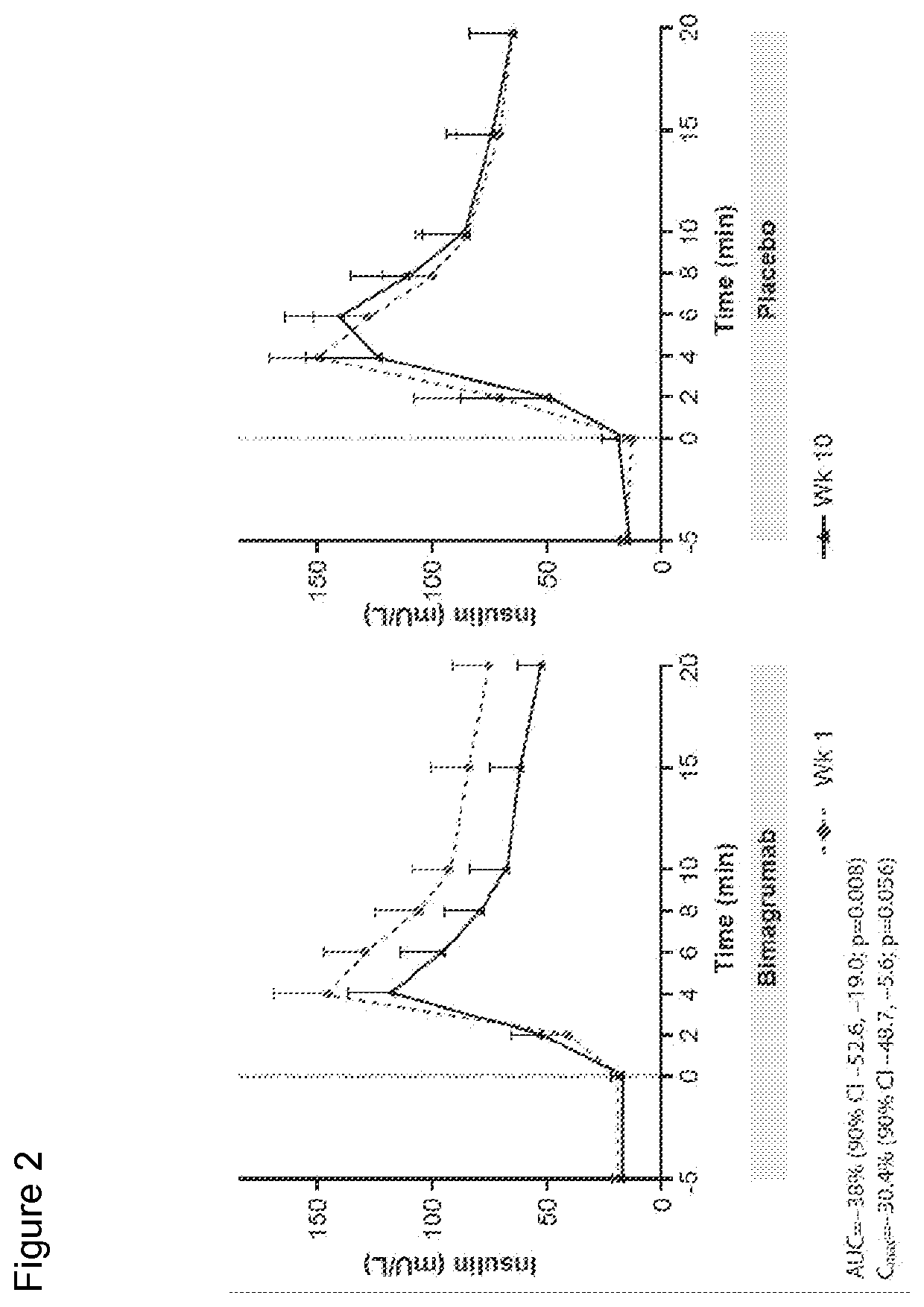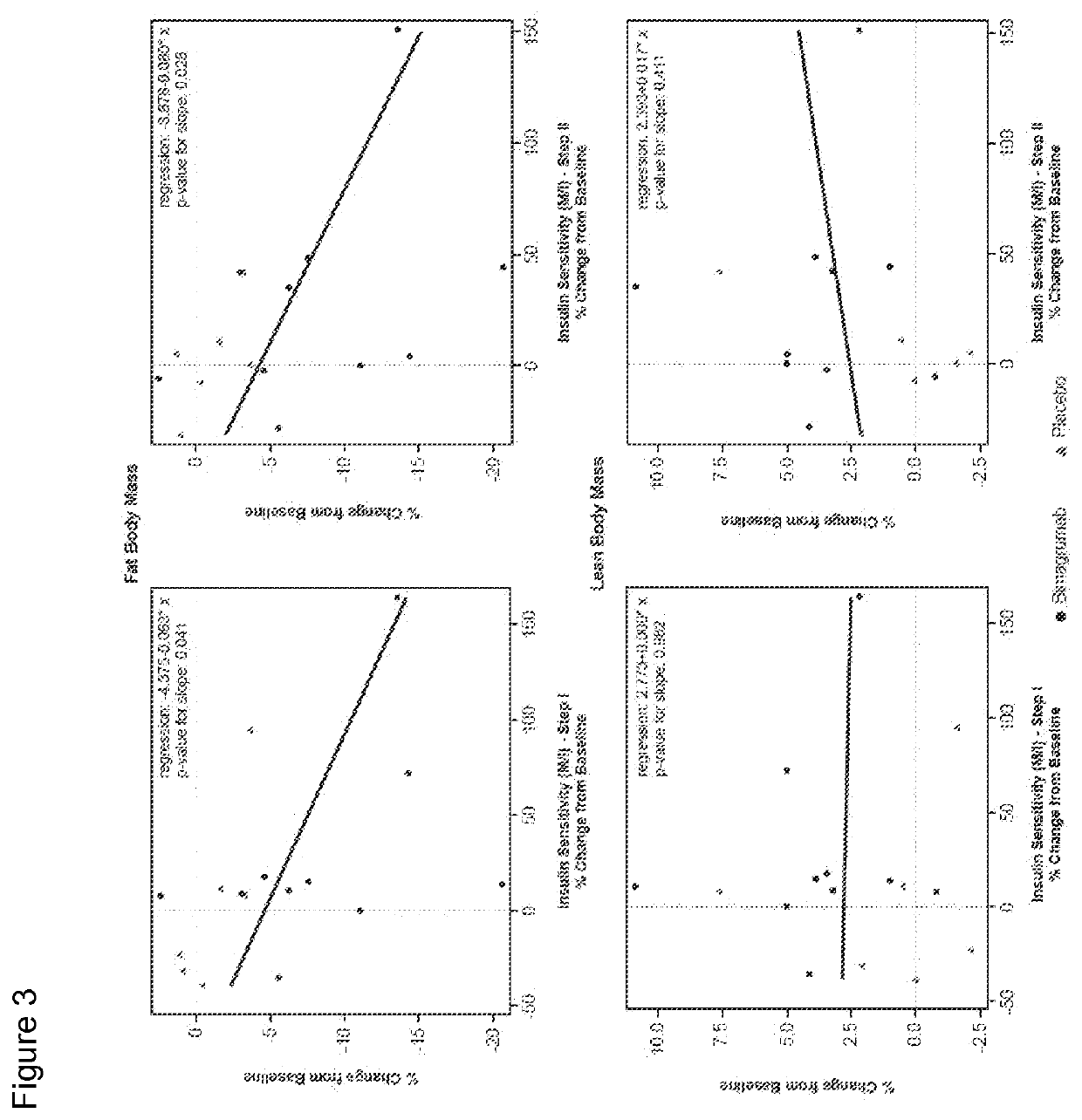Myostatin, activin or activin receptor antagonists for use in treating obesity and related conditions
a technology of activin and myostatin, which is applied in the direction of antibody medical ingredients, drug compositions, metabolic disorders, etc., can solve the problems of increasing safety risks, and achieve the effect of reducing myostatin activity and reducing myostatin activity
- Summary
- Abstract
- Description
- Claims
- Application Information
AI Technical Summary
Benefits of technology
Problems solved by technology
Method used
Image
Examples
example 1
b Improves Body Composition and Insulin Sensitivity in Insulin-Resistant Subjects
Study Design.
[0225]Study CBYM338X2206 was an exploratory phase Ib, randomized, double-blinded, placebo-controlled, single-center, single-dose study, conducted from 21 Aug. 2012 to 25 Oct. 2014 at the Profil Institute for Clinical Research, Inc., Chula Vista, Calif. Sixteen healthy volunteers with insulin resistance were randomly assigned in a ratio of 10:6 to receive either a single dose i.v. infusion of 30 mg / kg bimagrumab or placebo over approximately 2 hours, followed by a 4-hour observation period. This single-dose treatment period was followed by a 24-week follow-up. All subjects were instructed to maintain their current (as of screening) level of physical activity and exercise behaviors throughout the study period. Primary endpoint was to determine the effect of bimagrumab on whole body insulin sensitivity and body composition. Patients were assessed at baseline and at 10 weeks (Day 71) after drug...
example 2
Study
Study Design
[0245]BYM338X2211 is a non-confirmatory, randomized, subject and investigator blinded, placebo-controlled, parallel arms study, investigating a 48-week treatment period with intravenous bimagrumab in overweight / obese patients with type 2 diabetes. Approximately 60 patients are enrolled and randomized. For patients who do consent for the optional MRI, their liver, visceral and subcutaneous fat content are assessed.
PopulationApproximately 60 obese patients (BMI: 28-40 inclusive) with Type 2 DiabetesMales and Females between the ages of 18-65 inclusiveKey Inclusion criteriaMale and female, age 18 to 65 years (inclusive), in stable healthcondition as determined by past medical history, physical examination,vital signs, electrocardiogram, and laboratory tests at screening.Type 2 diabetes, with an HbA1c between 7% and 10% (inclusive) atscreening, on metformin or DPP4 inhibitor agent monotherapy, withstable treatment for approximately 3 months prior to randomization.Body m...
PUM
| Property | Measurement | Unit |
|---|---|---|
| weight | aaaaa | aaaaa |
| mass | aaaaa | aaaaa |
| mass | aaaaa | aaaaa |
Abstract
Description
Claims
Application Information
 Login to View More
Login to View More - R&D
- Intellectual Property
- Life Sciences
- Materials
- Tech Scout
- Unparalleled Data Quality
- Higher Quality Content
- 60% Fewer Hallucinations
Browse by: Latest US Patents, China's latest patents, Technical Efficacy Thesaurus, Application Domain, Technology Topic, Popular Technical Reports.
© 2025 PatSnap. All rights reserved.Legal|Privacy policy|Modern Slavery Act Transparency Statement|Sitemap|About US| Contact US: help@patsnap.com



